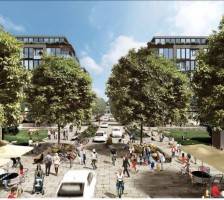May 20, 2016
New guide to Level 2 BIM compliance launched 0
 Anybody who is still confused about Building Information Modelling (there’s a lot of us) and its obligations under new legislation will welcome new free guidance published by the excellent Designing Buildings Wiki created by BRE, CIOB, BSRIA, ICE and others. Since last month, Level 2 BIM has been mandatory on centrally-procured public projects, with far-reaching implications for those involved. Clients, consultants, contractors and suppliers are now required to understand the finer details of the Level 2 process. But the 2016 NBS BIM Survey found 42 percent of respondents were just aware of BIM and 28 percent were not very, or not at all confident in BIM. The new guide aims to take users step-by-step through the Level 2 workflows, from the basics of storing project information to preparing employer’s information requirements. It is open access, meaning anyone in the industry can edit and improve the guide to reflect their experiences of using BIM in practice. It is aligned to Level 2 standard PAS 1192-2 and the 2013 RIBA plan of work.
Anybody who is still confused about Building Information Modelling (there’s a lot of us) and its obligations under new legislation will welcome new free guidance published by the excellent Designing Buildings Wiki created by BRE, CIOB, BSRIA, ICE and others. Since last month, Level 2 BIM has been mandatory on centrally-procured public projects, with far-reaching implications for those involved. Clients, consultants, contractors and suppliers are now required to understand the finer details of the Level 2 process. But the 2016 NBS BIM Survey found 42 percent of respondents were just aware of BIM and 28 percent were not very, or not at all confident in BIM. The new guide aims to take users step-by-step through the Level 2 workflows, from the basics of storing project information to preparing employer’s information requirements. It is open access, meaning anyone in the industry can edit and improve the guide to reflect their experiences of using BIM in practice. It is aligned to Level 2 standard PAS 1192-2 and the 2013 RIBA plan of work.








































May 17, 2016
London’s central office market peak driving change for other zones 0
by Tobi Crosbie • Cities, Comment, Facilities management, Property
There are plenty of good reasons to believe that London’s Central office market has hit its peak. Rents are at an all-time high in the majority of core office locations and whilst the start of 2016 has seen rents rise, there is certainly a clear steadying of the pace. According to our own data, the Landlord’s quoted rents for offices across the entire Central London market. Core offices such as Mayfair and St James’s have reached levels of £150 per square foot (pfs) in Q1 2016 compared with £120 per square foot in Q1 2015 a rise of 25 percent in 12 months. That does sound excessive, until this is compared with the rises seen East of the city in so called ‘fringe markets’ of Clerkenwell, Old Street and Shoreditch. Here the rents have become eye watering. In Q1 2015, the prime quoting rent in Shoreditch had reached £55 psf. In Q1 2016, this number had reached £75 psf highlighting an increase in 12 months of over 35 percent.
More →